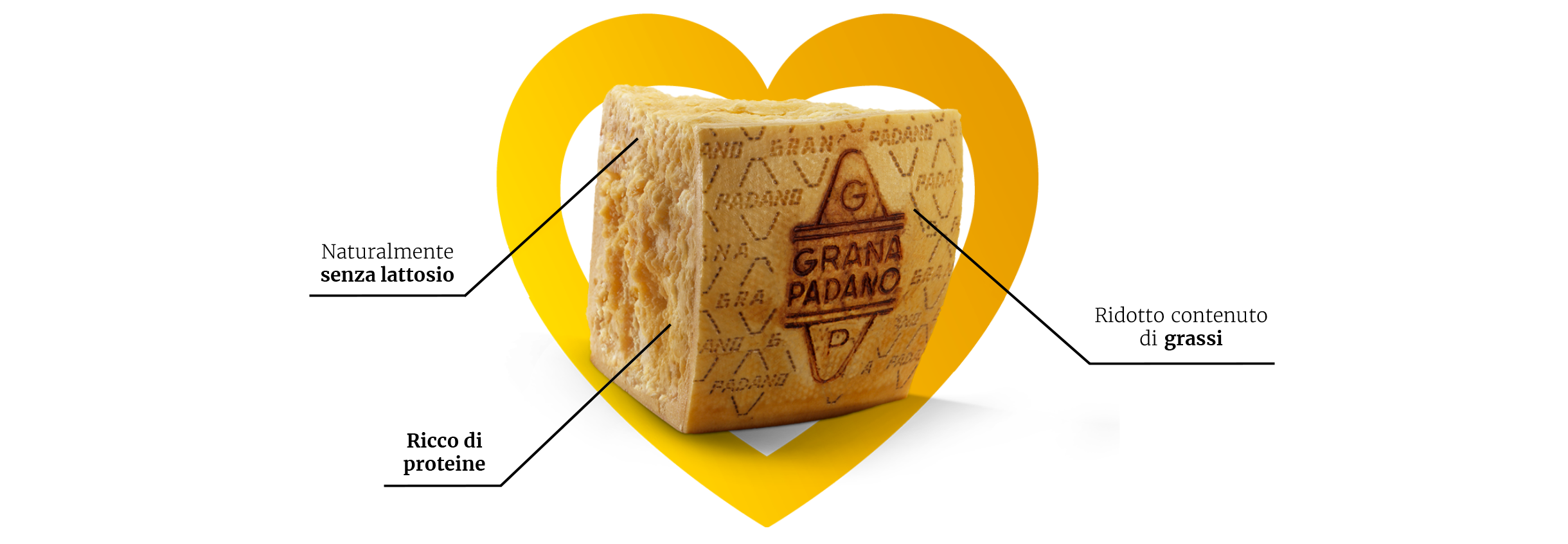L’emozione italiana
che fa stare bene
Quando ti fa sentire bene.
Quando ti spinge a dare il meglio.
Allora è amore. Allora è Grana Padano.
Ricco di calcio, proteine, con meno grassi
e naturalmente senza lattosio.
È il formaggio italiano che ha conquistato il mondo.
Quando ti spinge a dare il meglio.
Allora è amore. Allora è Grana Padano.
Ricco di calcio, proteine, con meno grassi
e naturalmente senza lattosio.
È il formaggio italiano che ha conquistato il mondo.
Grana Padano
un’emozione italiana


forme totali prodotte
nel 2024

forme esportate
nel 2024

caseifici produttori

addetti
I nostri
consorziati
Buono
in ogni forma
Le ricette della
tradizione italiana
I nostri spuntini
gustosi e leggeri
Aperitivi da
condividere
Progetti Finanziati







